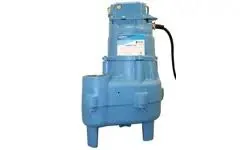Khmer
- Afrikaans
- Albanian
- Amharic
- Arabic
- Armenian
- Azerbaijani
- Basque
- Belarusian
- Bengali
- Bosnian
- Bulgarian
- Catalan
- Cebuano
- Corsican
- Croatian
- Czech
- Danish
- Dutch
- English
- Esperanto
- Estonian
- Finnish
- French
- Frisian
- Galician
- Georgian
- German
- Greek
- Gujarati
- Haitian Creole
- hausa
- hawaiian
- Hebrew
- Hindi
- Miao
- Hungarian
- Icelandic
- igbo
- Indonesian
- irish
- Italian
- Japanese
- Javanese
- Kannada
- kazakh
- Khmer
- Rwandese
- Korean
- Kurdish
- Kyrgyz
- Lao
- Latin
- Latvian
- Lithuanian
- Luxembourgish
- Macedonian
- Malgashi
- Malay
- Malayalam
- Maltese
- Maori
- Marathi
- Mongolian
- Myanmar
- Nepali
- Norwegian
- Norwegian
- Occitan
- Pashto
- Persian
- Polish
- Portuguese
- Punjabi
- Romanian
- Russian
- Samoan
- Scottish Gaelic
- Serbian
- Sesotho
- Shona
- Sindhi
- Sinhala
- Slovak
- Slovenian
- Somali
- Spanish
- Sundanese
- Swahili
- Swedish
- Tagalog
- Tajik
- Tamil
- Tatar
- Telugu
- Thai
- Turkish
- Turkmen
- Ukrainian
- Urdu
- Uighur
- Uzbek
- Vietnamese
- Welsh
- Bantu
- Yiddish
- Yoruba
- Zulu
Telephone: +86 13120555503
Email: frank@cypump.com
វិច្ឆិកា . 12, 2024 00:59 Back to list
'efficient solutions for transporting heavy concrete slurry ...'
Efficient Solutions for Transporting Heavy Concrete Slurry
Transporting heavy concrete slurry is a critical aspect of construction and civil engineering projects. This viscous mixture of cement, aggregates, water, and sometimes additives is necessary for various applications, including foundation work, road construction, and the creation of durable structures. However, transporting heavy concrete slurry poses unique challenges due to its density, viscosity, and tendency to separate or settle. Therefore, innovative and efficient solutions are essential for ensuring smooth and effective transportation of this material.
Understanding the Challenges
Concrete slurry is characterized by its high density and relatively low flowability compared to traditional liquids. These properties can make transportation problematic, especially when dealing with large volumes. The challenges involved in transporting heavy concrete slurry include
1. Viscosity and Flow The thick nature of concrete slurry can lead to blockages in pipes or hoses, making it difficult to pump over long distances. 2. Segregation Components of the slurry can separate during transportation, leading to variable strength and consistency in the final application. 3. Slump Loss Over time, the workability of the concrete slurry can decrease, resulting in a loss of slump and making it more difficult to handle.
4. Weight and Volume The weight of concrete slurry makes it expensive to transport over great distances, both in terms of fuel and logistical considerations.
5. Environmental Considerations Ensuring that the slurry mix does not leak or spill during transport is vital to minimize environmental impact and comply with regulations.
Innovative Transportation Solutions
To overcome these challenges, several innovative solutions have been developed in the industry
'efficient solutions for transporting heavy concrete slurry ...'

1. Pumping Technologies Modern pumping technologies, including high-pressure pumps and variable-speed drives, provide better control over the flow of concrete slurry. These systems can maintain a consistent pressure and flow rate, reducing the risk of blockage and improving the efficiency of the transportation process.
2. Slurry Mix Design Improvements By adjusting the formulation of the concrete slurry, engineers can improve its flow properties. Utilizing superplasticizers can reduce viscosity while maintaining workability, allowing the slurry to flow more easily through pipelines without segregation.
3. Use of Agitated Transport Vehicles Agitated trucks or mixers equipped with rotating drums help keep the concrete slurry homogeneous during transportation. These vehicles are designed to minimize slump loss and prevent segregation, ensuring that the slurry retains its quality until it reaches the job site.
4. Pipeline Systems Permanent pipeline systems can be installed for transporting concrete slurry directly from mixing plants to construction sites. These systems can significantly reduce transportation costs and improve delivery times, especially for large projects. Using specialized pipelines minimizes exposure to environmental factors, further reducing the risk of slump loss and segregation.
5. Monitoring and Automation Advanced monitoring systems equipped with sensors can provide real-time data on the viscosity and consistency of the concrete slurry during transportation. Automated controls can adjust the pumping pressure and flow rates accordingly, ensuring optimal conditions throughout the transport process.
6. Environmental Best Practices Implementing eco-friendly practices, such as spill prevention measures and the use of recycled materials in slurry designs, can help minimize the environmental impact of transporting concrete. This not only complies with regulatory requirements but also enhances a company’s sustainability profile.
Conclusion
Efficient transportation of heavy concrete slurry is pivotal to the success of construction projects and plays a significant role in determining project timelines and costs. By adopting modern pumping technologies, enhancing slurry mix designs, using agitated transport vehicles, and implementing innovative pipeline systems, the construction industry can address the various challenges associated with concrete slurry transportation. Continuous advancements in monitoring and automation, combined with a focus on sustainability, will ensure that the industry can meet the growing demand for efficient and effective transportation solutions in the years to come. In this way, not only can we streamline construction processes, but we can also contribute positively to environmental stewardship and project efficacy.
-
Custom Drilling Mud and Slurry Pump Supplier - High Efficiency, Tailored Solutions
NewsJun.10,2025
-
Supply Vertical Submersible Sewage Pump High-Efficiency WQ/QW Pumps Supplier
NewsJun.10,2025
-
Premium Sewage Ejection System & Pumps Efficient Waste Removal
NewsJun.09,2025
-
Premium Wholesale Slurry Pump Impellers Durable & Efficient Slurry Handling
NewsJun.09,2025
-
Top Sewage Pump Companies Durable Industrial Solutions for Efficiency
NewsJun.09,2025
-
Heavy Duty Slurry Pumps - OEM High Performance & Bulk Wholesale
NewsJun.09,2025










